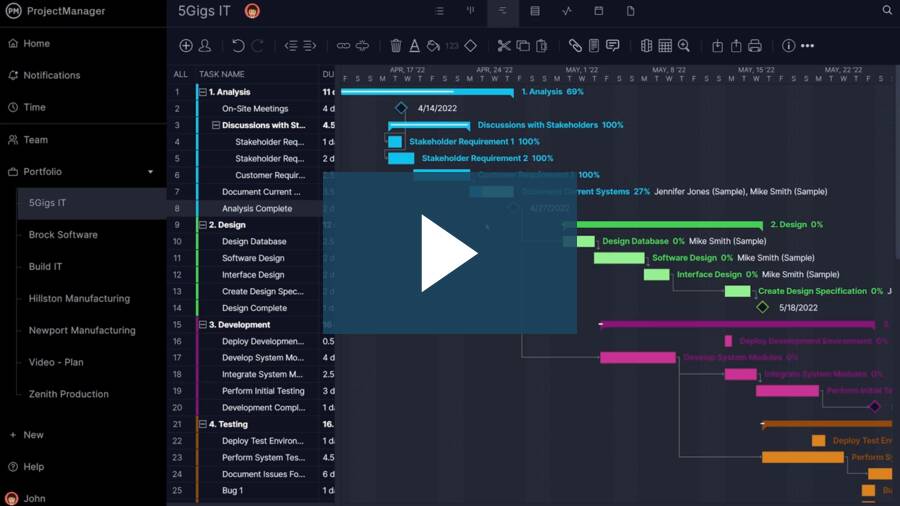Creating an annual work plan is one of the most effective ways to align your team around organizational goals. By setting a clear path for the year, you provide structure and direction while helping teams prioritize initiatives. An annual work plan serves as both a roadmap and a reference point, making sure efforts are focused where they matter most and resources are used efficiently to maximize impact.
Whether you are leading a nonprofit, managing a corporate department or running a government program, the process of making an annual work plan gives you clarity on objectives and outcomes. It also provides transparency for stakeholders who want to see measurable progress. When done well, this type of plan transforms lofty strategic goals into concrete actions, ensuring accountability and consistent evaluation throughout the year.
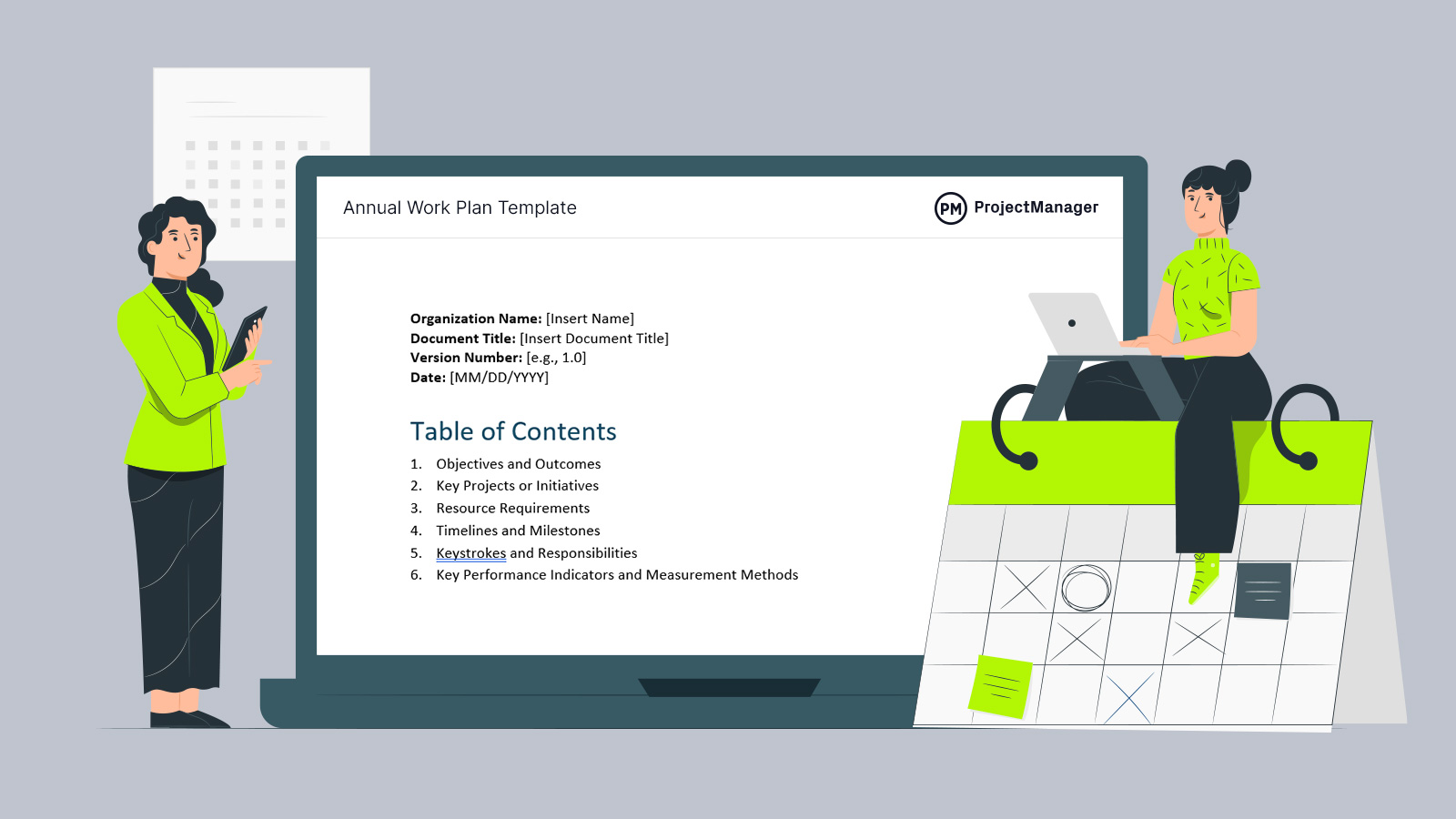
Get your free
Annual Work Plan Template
Use this free Annual Work Plan Template for Word to manage your projects better.
What Is an Annual Work Plan?
An annual work plan is a structured document that outlines the key goals, initiatives and resources required to achieve success within a year. It includes objectives, timelines, roles and performance measures, giving leaders and teams a roadmap for execution. Unlike strategic plans that span several years, an annual work plan breaks strategy into actionable pieces and connects daily activities with broader organizational priorities.
Project management software is an ideal tool for creating an annual work plan because it centralizes planning, scheduling and tracking in one place. With features like task assignment, resource allocation and reporting, software makes it easier to map dependencies, monitor progress and share updates with stakeholders. This reduces confusion, improves collaboration and helps ensure teams are aligned throughout the year.
ProjectManager is the best software for building and managing an annual work plan, thanks to its Gantt charts that provide a detailed visual of timelines and dependencies. Our dashboards track progress in real time. Teams can also use kanban boards, calendars or list views depending on their preference, ensuring flexibility and visibility. Resource management tools, workload charts, timesheets and reporting functions make it easier to control budgets, balance capacity and measure performance against KPIs. Get started with ProjectManager today for free.
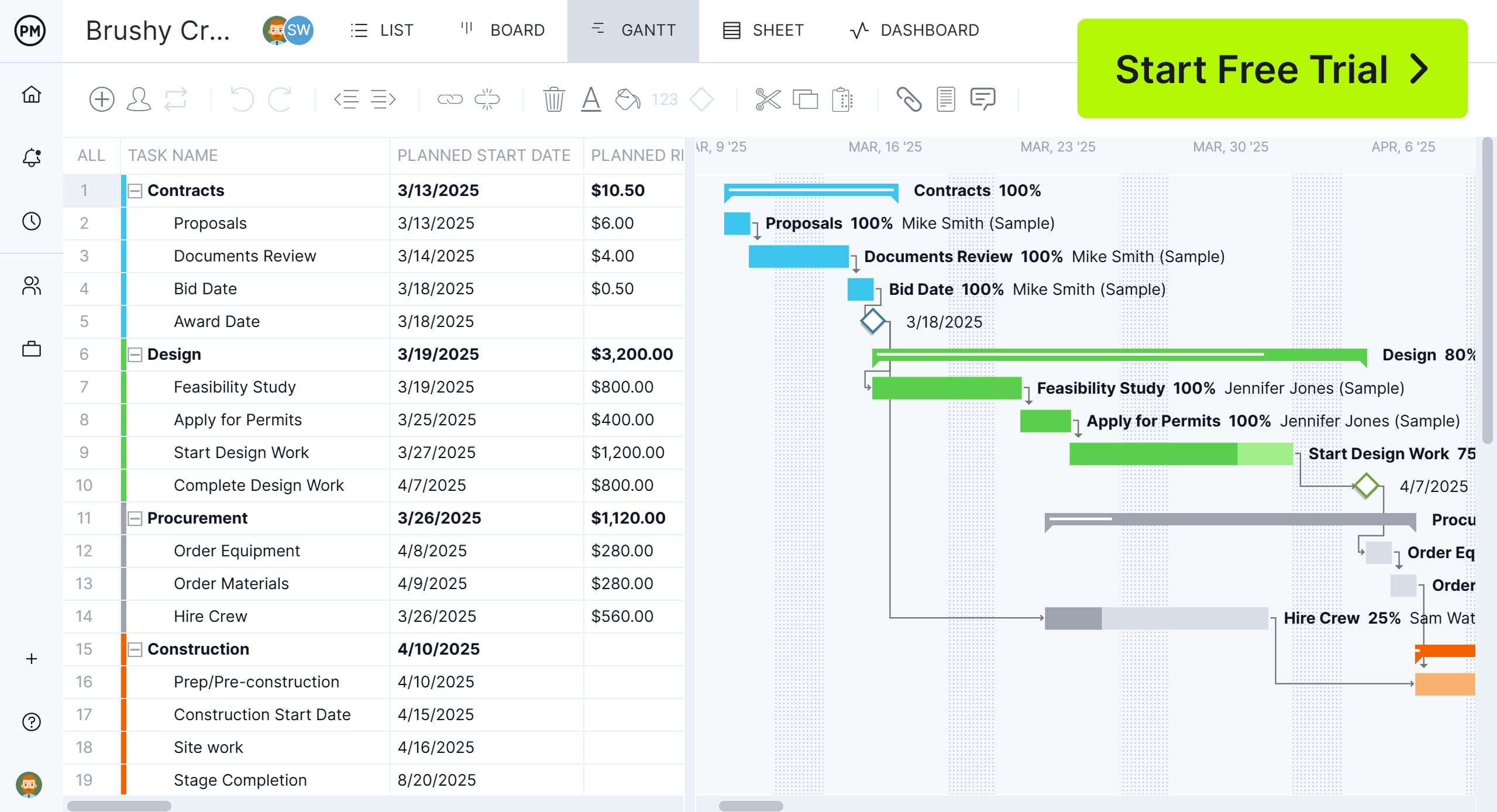
Who Should Use an Annual Work Plan?
An annual work plan is beneficial for a wide range of organizations. It ensures clarity, provides accountability and supports data-driven decision-making. Whether your focus is social impact, public services or business outcomes, having a clear annual plan is the foundation for long-term success. Here’s how different sectors can use annual work plans effectively:
Nonprofits & NGOs
For nonprofits and NGOs, an annual work plan helps balance limited resources while maximizing impact. By outlining objectives, defining projects and setting measurable outcomes, these organizations can demonstrate accountability to donors and stakeholders. A well-structured annual work plan also makes grant reporting easier and keeps teams aligned on fundraising, outreach and program delivery, ensuring that each initiative contributes directly to mission-driven goals.
Government Agencies
Government agencies use annual work plans to manage programs, allocate funding and deliver services to the public. These plans establish clear goals, define timelines and assign roles across departments to ensure effective coordination. An annual work plan also supports compliance with regulatory requirements while improving transparency and accountability. By breaking down strategic objectives into yearly targets, agencies can monitor progress, assess performance and maintain public trust by demonstrating measurable outcomes throughout the year.
Corporate Sector
In the corporate sector, annual work plans align teams with broader business strategies. By identifying key initiatives, setting timelines and defining responsibilities, organizations can track progress against revenue goals, market expansions or product launches. These plans also serve as communication tools, making expectations clear across departments. Annual work plans ensure resource allocation is strategic, performance is measured effectively and leadership can make informed adjustments, ultimately driving productivity, innovation and growth within highly competitive industries.
Related: 9 Work Templates for Excel and Word
What Should Be Included In an Annual Work Plan?
An effective annual work plan includes several core components that connect strategy to action. These elements help organizations translate big-picture goals into measurable outcomes, ensuring clarity and accountability throughout the year. Here are the essential components:
Objectives and Outcomes
Objectives and outcomes define what the organization wants to achieve and how success will be measured. They serve as the foundation for the entire annual work plan, ensuring activities are aligned with long-term goals. Clear objectives help set direction, while measurable outcomes create benchmarks for evaluation. Together, they provide both vision and accountability, enabling leaders and teams to stay focused and track whether the organization is moving closer to its mission.
Key Projects or Initiatives
This section of the annual work plan highlights the most important projects, programs or initiatives your team will focus on throughout the year. Each project should include a brief description, objectives, timelines and expected outcomes. Clearly identifying key projects helps prioritize resources, align efforts with organizational goals and track progress over time.
For each initiative, outline the responsible team or individual, milestones and critical dependencies. This ensures accountability and makes it easier to identify potential risks or bottlenecks early. Including key projects or initiatives in your annual work plan provides a roadmap for success and ensures that everyone understands which efforts are most strategic and impactful.
Related: 18 Free Project Planning Templates for Excel and Word
Resource Requirements
Resource requirements outline what is needed to execute the plan successfully. This includes staffing, budget, equipment, technology and partnerships required to achieve goals. Defining these needs in advance helps organizations allocate resources strategically and avoid bottlenecks. A well-detailed resource plan also improves financial management, ensuring costs are tracked against available funding. By listing and clarifying all resource requirements, an annual work plan increases efficiency, accountability and transparency across the organization as projects move forward.
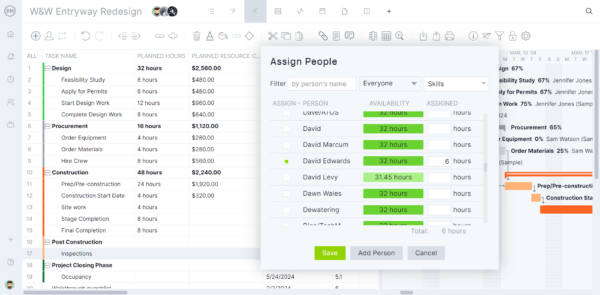
Timelines and Milestones
Timelines and milestones establish the schedule for executing an annual work plan. They define when tasks should be completed and mark key checkpoints to measure progress. Milestones act as performance indicators, showing whether projects are on track. Including timelines helps prevent delays, ensures accountability and provides a structure for managing workloads. Together, timelines and milestones keep teams aligned and help leadership assess whether initiatives are advancing as expected throughout the year.
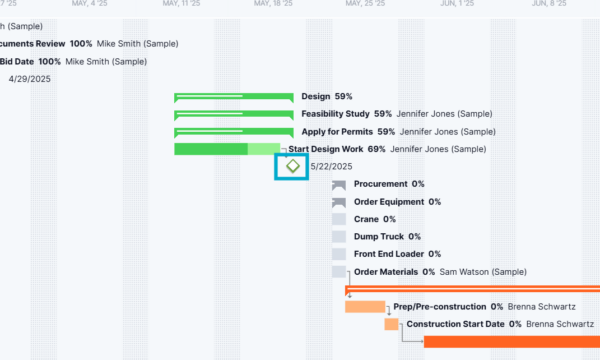
Key Roles and Responsibilities
Key roles and responsibilities define who is accountable for each part of the plan. By assigning ownership, organizations ensure that no task is overlooked and accountability is clear. Including roles in the annual work plan also prevents duplication of effort and improves collaboration among teams. Clear responsibilities promote efficiency, ensure expectations are understood and give leadership a way to track performance. This structure makes project execution smoother and results more reliable across the organization.
Key Performance Indicators and Measurement Methods
Key performance indicators and measurement methods define how progress will be tracked and evaluated. KPIs provide measurable benchmarks that indicate success, while measurement methods outline the tools or processes used to gather data. Including KPIs in an annual work plan ensures accountability and supports evidence-based decision-making. This data-driven approach helps organizations demonstrate impact, optimize resource allocation and adjust strategies when necessary, ensuring initiatives remain effective and aligned with broader organizational goals.
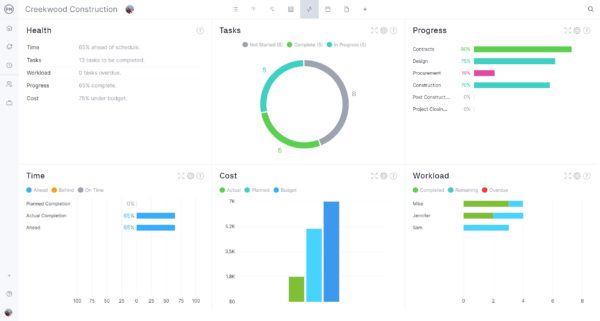
Annual Work Plan Template
Download this free annual work plan template for Word to give teams a ready-to-use structure for planning objectives, projects, timelines and resources in a familiar format. Because it’s built in Word, there’s no learning curve—anyone can download the template, fill in the sections and customize it to their organization’s specific goals. It makes managing projects easier by organizing details such as initiatives, resource requirements and performance indicators into tables or structured outlines that are easy to edit and share. Click on the image below to download the template.
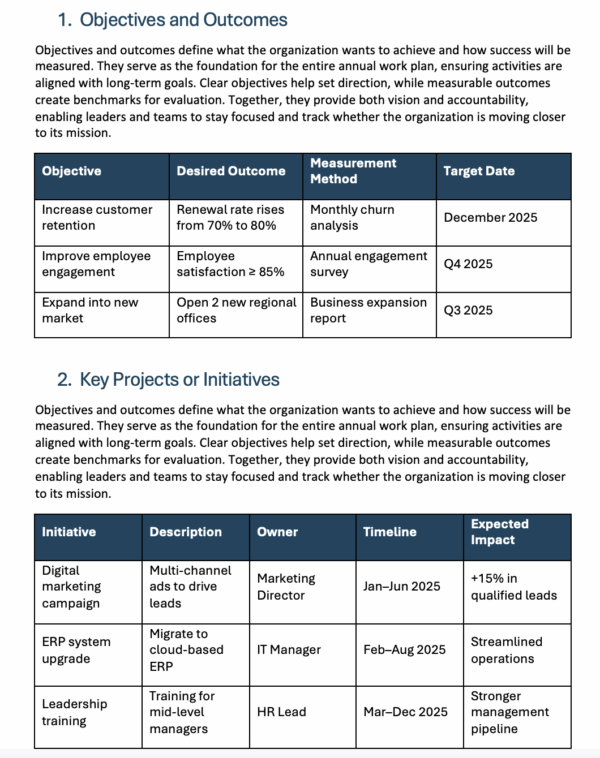
The template also works well for collaboration, since Word files can be circulated by email or uploaded to shared drives for group input. Nonprofits, government agencies and businesses can use the free annual work plan template for Word to ensure their teams are aligned around the year’s priorities. By offering a simple but comprehensive framework, it helps managers save time, avoid starting from scratch and focus more on execution and results.
Annual Work Plan Example
To illustrate how to put all of these elements together, here’s a sample annual work plan. This example shows how objectives, initiatives, resources, timelines, responsibilities and measurement methods can be documented clearly. Using a structured approach like this helps organizations maintain accountability and transparency while keeping everyone aligned with priorities. The tables below provide a snapshot of how to format and organize your own annual work plan so that goals are both actionable and measurable.
Objectives and Outcomes
For 2025, the leadership team at Horizon Solutions set three clear objectives to strengthen the company’s position. Retaining existing customers became a top priority after renewal rates slipped to 70% last year. At the same time, employee engagement needed attention, with morale surveys revealing room for growth. Finally, executives pushed for market expansion, targeting two new regional offices to capture untapped demand. These objectives balance internal culture with external growth, giving the company measurable benchmarks to rally around throughout the year.
| Objective | Desired Outcome | Measurement Method | Target Date |
| Increase customer retention | Renewal rate rises from 70% to 80% | Monthly churn analysis | December 2025 |
| Improve employee engagement | Employee satisfaction survey score ≥ 85% | Annual engagement survey | Q4 2025 |
| Expand into new market | Open 2 new regional offices | Business expansion report | Q3 2025 |
Key Projects or Initiatives
To move these objectives forward, Horizon Solutions launched three cornerstone initiatives. A digital marketing campaign was designed to capture new leads and support regional growth plans. Meanwhile, IT prepared an ERP system upgrade, a long-delayed project critical to streamlining operations as customer demand scales. To strengthen leadership capacity, HR rolled out a year-long training program for mid-level managers. Each initiative was tied to clear ownership, realistic timelines and measurable impacts to ensure momentum didn’t stall once execution began.
| Initiative | Description | Owner | Timeline | Expected Impact |
| Digital marketing campaign | Multi-channel ads to drive leads | Marketing Director | Jan–Jun 2025 | +15% in qualified leads |
| ERP system upgrade | Migrate to cloud-based ERP | IT Manager | Feb–Aug 2025 | Streamlined operations |
| Leadership training | Training for mid-level managers | HR Lead | Mar–Dec 2025 | Stronger management pipeline |
Resource Requirements
Delivering on these initiatives required significant investment in people and tools. Customer support staffing was expanded to cover service in the new regions. Marketing secured a $150,000 budget to fuel the digital campaign, while IT equipped new hires with laptops and CRM licenses. HR sought an external training vendor to deliver leadership programs at scale. By laying out these needs in advance, Horizon Solutions avoided the typical mid-year scramble for resources and ensured every team had what it needed to succeed.
| Resource Category | Specific Needs | Quantity/Amount | Notes |
| Staffing | Additional customer support reps | 5 | To cover new regions |
| Budget | Marketing spend | $150,000 | Allocated across digital channels |
| Equipment | Laptops for new hires | 10 | Standard issue devices |
| Technology | CRM licenses | 50 | Expansion of existing plan |
| Partnerships | Training vendor | 1 | Contract to be signed in Q1 |
Related: 20 Best Resource Management Software of 2025 (Free & Paid)
Timelines and Milestones
The work plan anchored each initiative with specific checkpoints to maintain accountability. The marketing campaign was scheduled to launch by March, setting the pace for lead generation in the first half of the year. The ERP system’s pilot was targeted for May, a critical milestone to avoid delays in full deployment. By July, the first leadership training cohort was expected to finish. Finally, the expansion team aimed to secure office leases by September, laying the foundation for entering new markets.
| Initiative | Key Milestone | Deadline | Status |
| Marketing campaign | Campaign launch | Mar 2025 | Planned |
| ERP upgrade | Pilot implementation complete | May 2025 | Pending |
| Leadership training | First cohort completed | Jul 2025 | Pending |
| Market expansion | Regional office lease signed | Sep 2025 | Not started |
Key Roles and Responsibilities
Ownership was distributed across departments to align expertise with delivery. The Project Manager reported to the CIO while steering the ERP upgrade, ensuring technical oversight. The Marketing Director, accountable to the VP of Marketing, managed the digital campaign and its results. HR’s Lead coordinated training sessions under the CHRO’s guidance. Finance monitored spending against the annual plan, providing monthly updates to the CFO. This clear delegation of responsibilities gave the executive team confidence that execution was being actively managed.
| Role | Responsibility | Deliverable | Reporting To |
| Project Manager | Oversee ERP upgrade | Implementation plan | CIO |
| Marketing Director | Execute digital campaign | Campaign results report | VP Marketing |
| HR Lead | Deliver training program | Training completion reports | CHRO |
| Finance Analyst | Monitor budget spend | Monthly financial reports | CFO |
Key Performance Indicators and Measurement Methods
Horizon Solutions tracked progress through a defined set of KPIs. Customer retention was monitored monthly through churn reports, targeting an 80% renewal rate by year-end. Employee engagement was measured annually to push satisfaction scores above 85%. Quarterly expansion reports confirmed progress toward opening two new offices. Marketing added a performance KPI, aiming for a 15% increase in qualified leads. These KPIs provided not just numbers, but the story of whether the strategy was converting into results.
| KPI | Measurement Method | Target | Frequency |
| Customer retention rate | Monthly churn analysis | 80% renewal rate | Monthly |
| Employee engagement | Annual engagement survey | ≥ 85% satisfaction | Annually |
| Market expansion | Business expansion report | 2 new offices opened | Quarterly |
| Marketing performance | Lead conversion tracking | +15% qualified leads | Monthly |
Free Related Templates
These free templates help you streamline planning and management across different time frames and team structures. Use them to set clear goals, align resources and track progress efficiently.
5-Year Plan Template
Download this free template to map long-term objectives and milestones. It helps organizations and individuals visualize growth strategies and plan resource allocation over a five-year horizon.
Staffing Plan Template
Use this free template to organize team structures and plan hiring needs. It makes it easy to track roles, responsibilities and workforce requirements for projects or departments.
30-60-90 Day Plan Template
This free template is designed for onboarding or short-term project planning. It breaks goals into 30, 60 and 90-day segments to ensure clear priorities and measurable progress.
How ProjectManager Helps Manage an Annual Work Plan
ProjectManager helps organizations efficiently manage their annual work plans by providing a centralized platform to organize all objectives, initiatives and deadlines. With its intuitive interface, teams can break down high-level goals into actionable tasks, assign responsibilities, and set clear timelines. Multiple project views allow everyone to work how they want, know their role in achieving the yearly objectives and track progress in real time, preventing delays and miscommunication.
One of the most powerful planning tools is the Gantt chart. Learn more about how the Gantt can support annual work plans by watching our short video below.
Optimize Resource Management
ProjectManager’s resource management tools make it easy to allocate and balance workloads across teams. Managers can see who is available, assign tasks efficiently, and prevent overallocation with color-coded workload charts. There’s also a team page to get a live view of their progress and even update their tasks without leaving the page. By visualizing resource usage, teams can adjust schedules and priorities proactively, ensuring that projects remain on track without overburdening staff.
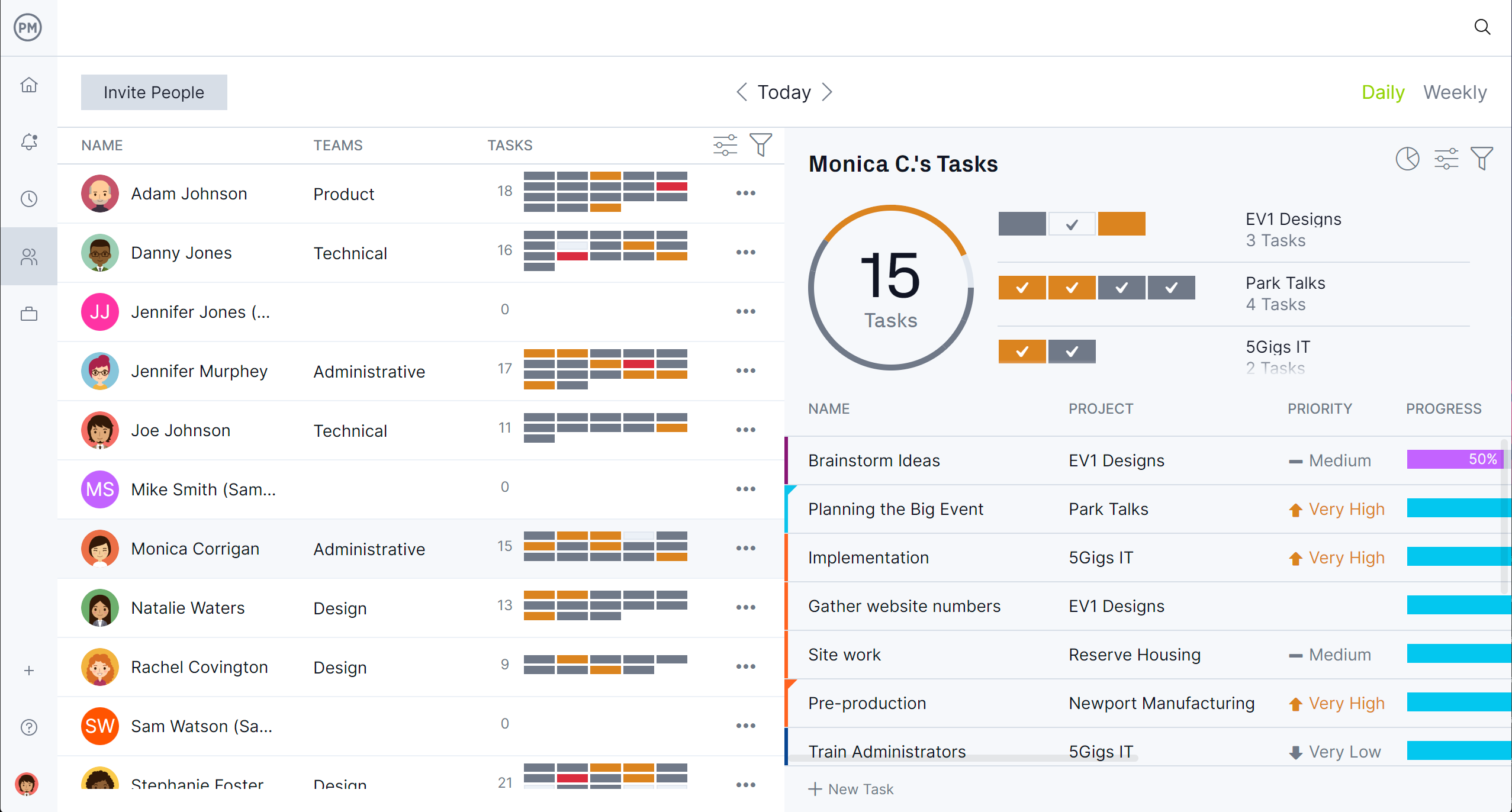
Track Progress with Dashboards and Reports
The platform provides comprehensive tracking through interactive dashboards, detailed and customizable AI-powered reports, plus secure timesheets that can also monitor labor costs. Teams can monitor task completion, project milestones and budget usage at a glance. Automated reports powered by ChatGPT keep leadership informed, while timesheets allow accurate tracking of hours and labor expenses, making it easier to measure productivity and maintain accountability throughout the year.
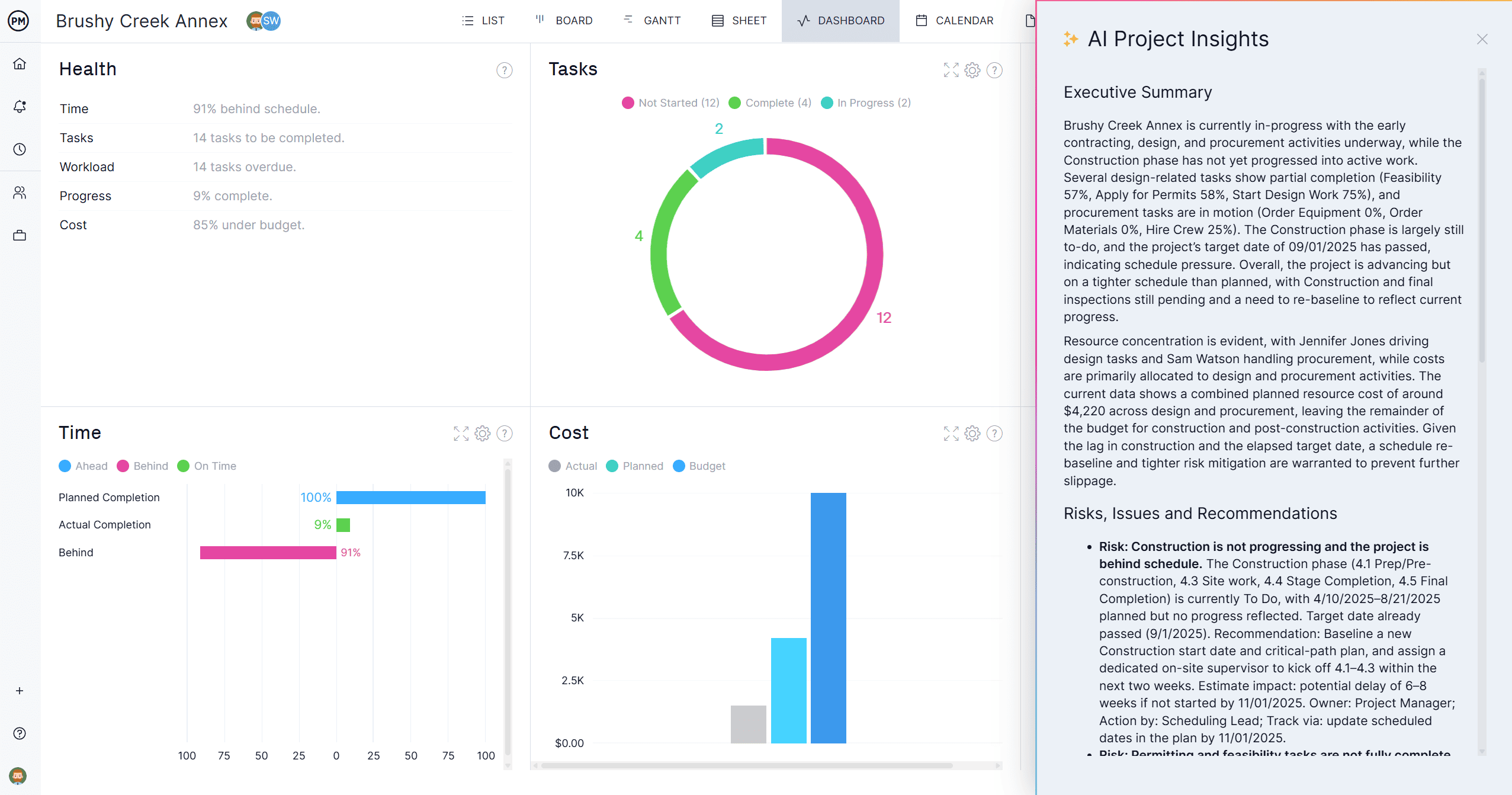
Related Content
An annual work plan is one of many different ways to manage tasks over time. For readers interested in learning more about other tools that can help them meet deliverables and deliver quality outputs, check out the links below. There are examples of other kinds of work plans, how to create a tactical plan for your business and much more.
- 5 Work Plan Examples You Can Learn From
- Creating a Tactical Plan for Your Business
- A Quick Guide to Strategic Initiatives
- How to Create a Strategic Roadmap for Your Organization
- Strategic Planning in Business
ProjectManager is online project and portfolio management software that connects teams, whether they’re in the office or out in the field. They can share files, comment at the task level and stay updated with email and in-app notifications. Get started with ProjectManager today for free.

